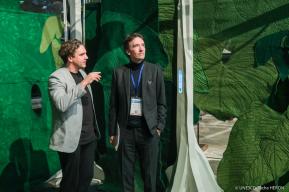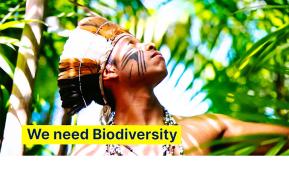
Improving resilience and halting biodiversity loss in the Greater Amazon Basin
Implemented with the support of LVMH
The Amazon Biosphere Reserves Project seeks to halt the degradation of forest areas, conserve biodiversity and ecosystems, and support alternative livelihoods for communities and Indigenous Peoples.
Since 2021, this project has supported more than 42 initiatives aimed at regenerating ecosystems and developing sustainable employment opportunities for local communities by combining scientific knowledge with local and indigenous knowledge in order to reduce negative impacts on biodiversity and improve resilience to climate change. The project supports place-based initiatives to promote sustainable production and resource management, improve territorial governance and support the added value of socio-biodiversity products.
The Amazon Biosphere Reserves Project provides a framework that reconciles conservation and sustainable use. The UNESCO biosphere reserves network in the region enables knowledge sharing to conserve biodiversity throughout the basin, including key threatened species such as the giant arapaima fish, the Amazonian manatee, black caiman and river dolphins.
In parallel of strengthening coordination and governance within the designated sites, the Amazon Biosphere Reserves Project is reinforcing the development and implementation of Youth Networks that involve young leaders and representatives in the management and decision-making of their biosphere reserves.

8 Amazon biosphere reserves designated by UNESCO

Key Figures
| Biosphere reserve | Area covered | Inhabitants |
|---|---|---|
| Benin | 135.3 thousand hectares | 2.5 thousand |
| Pilón Lajas | 400 thousand hectares | 29 thousand |
| Central Amazon | 19.8 million hectares | +490 thousand |
| Podocarpus-El Cóndor | 1.41 million hectares | +369 thousand |
| Sumaco | 931.9 thousand hectares | +190 thousand |
| Yasuní | 2.7 million hectares | +75 thousand |
| Manu | 2.4 million hectares | +45 thousand |
| Oxapampa-Asháninka-Yánesha | 1.768.785 hectares | +116 thousand |
News and stories
Partner
This project is the result of an effective partnership with the private sector.
It is implemented with LVMH, UNESCO’s top private partner for biodiversity initiatives.














